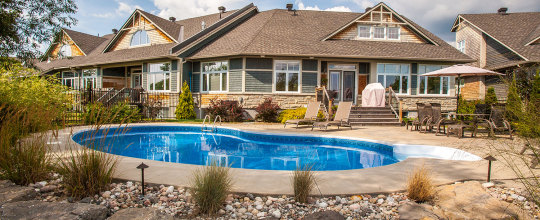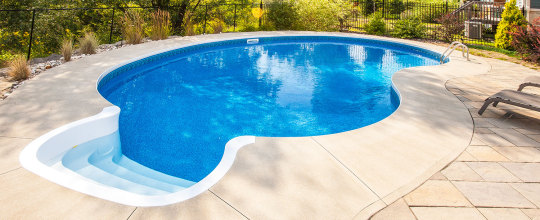Jordco Pools has been installing concrete decking and ground pools for Ottawa families since 1995. Jordan and his team have built over 1000 pools for Ottawa families to date, with the help of industry-leading pool manufacturers and suppliers. | +1 (613) 227-4909 | www.jordcopools.com
Don't wanna be here? Send us removal request.
Text
What pH Level Should My Swimming Pool Have And How Can It Be Adjusted?

The pH level of pool water refers how acidic (alkaline or basic) it is. Anything between 0 and 7 are acidic, while 7-14 or more is basic. Maintaining a pH balance will make your pool safe and comfortable to use.
A swimming pool's pH should be between 7.4-7.6. The pH value of the human body is 7.4.
The presence of algae, quick heating of the water or additions to sanitizers may cause high pH.
An excessive pH level can cause:
Dry, itchy skin and burning eyes
Scale buildup in walls and on pool mechanics
High pH can cause cloudy water and algae to build up
Add sodium bisulfate to pool water to reduce pH. Follow all instructions provided by the manufacturer for chemical treatments
Low pH can result from:
In the water, leaves and plant waste
Heavy rain
High pool use can lead to hair and skin contamination.
The pH level in your pool water can cause pool equipment and surfaces to become etched and corroded.
By adding an alkaline, such as sodaash (sodium bicarbonate), or borax to low pH levels, you can correct them. You can also improve the water's aeration by adding a water feature. To ensure that you add the right amount of chemicals to your pool, always follow the instructions.

What other things do I need to do to ensure healthy pool water?
To keep your pool water healthy and balanced, there are many other chemicals that must be adjusted.
Bromine and chloride are common backyard pool sanitizers. They protect your pool from bacteria, viruses, algae and oxidation by ionizing or removing them.
Limitations on chlorine levels should not exceed 1 to 3 parts in million. High pool use can lead to rapid drop in chlorine levels. Also, chlorine can be quickly melted by the sun so it must be replaced faster on hotter day.
There are many options for chlorine and other sanitizers:
Liquid: Dissolved and poured into a pool
Granules are placed into the filter to distribute water as it circulates
Tablets can be added onto a floating or automated dispenser
Many sanitizers contain stabilizers that slow the effects of sunlight. For this purpose, cyanuric acids can also be used.
Ask your Ottawa pool installation company for more informations.

Shocking your pool
To increase sanitizer levels when they have fallen very low, shock treatments can be used. The liquid chlorine is then added to the tank and circulated for several hours.
How Often should I test the water in my In-Ground Pool?
You can use the same methods to check the level in your pool's sanitizer.
It is important to test the levels of sanitizer every day and adjust as needed. You should test your pH and Total Alkalinity at least two to three times per week. If there has been heavy usage or a storm, you may need to test more often.
Jordco Pools https://jordcopools.com/ +16132274909
1 note
·
View note